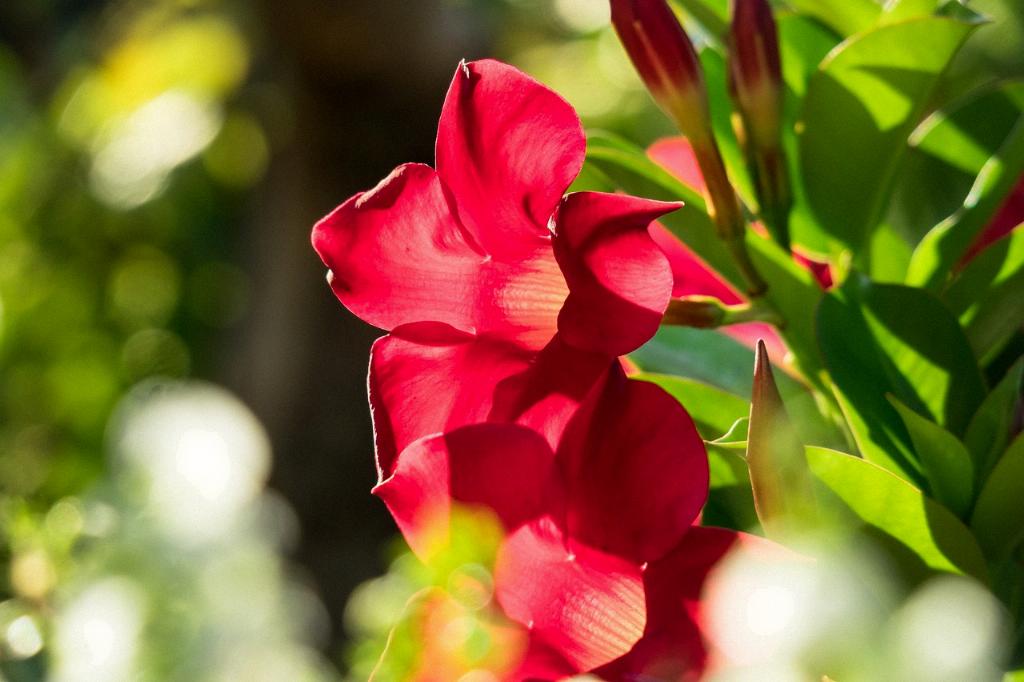If you’re a gardening enthusiast looking to add a splash of color and elegance to your outdoor space, then the Mandevilla plant might just be the perfect addition to your botanical collection. In this article, we’ll delve into the essential aspects of caring for a Mandevilla plant to ensure it thrives and blossoms to its fullest potential.
Understanding the Mandevilla Plant
The Mandevilla plant, also known as Dipladenia, is a tropical vine that boasts vibrant, trumpet-shaped flowers in shades of pink, red, and white. This eye-catching plant is revered for its lush foliage and its ability to climb trellises or trail along fences, making it a popular choice for adding vertical interest to gardens and patios.
There are several varieties of Mandevilla plants, each exhibiting unique characteristics in terms of flower size, color, and growth habits. Whether you opt for the classic Mandevilla sanderi, the showy Mandevilla boliviensis, or any other cultivar, all Mandevilla plants require similar care to thrive.
Essential Growing Conditions for Mandevilla
Mandevilla plants flourish in warm, tropical environments and thrive under bright, indirect sunlight. When cultivating Mandevillas, ensure they receive at least 6 hours of sunlight daily to promote healthy growth and abundant flowering. Additionally, these plants prefer well-draining, fertile soil that is kept consistently moist but not waterlogged.
Water Mandevilla plants regularly, ensuring the soil remains evenly moist but not saturated. Avoid letting the soil dry out completely, as this can result in stressed plants and diminished blooming. During the growing season, fertilize your Mandevilla plant every 2 to 4 weeks with a balanced fertilizer to provide the necessary nutrients for robust growth.
Caring for Mandevilla Plant
Proper pruning and trimming are integral to maintaining the health and shape of your Mandevilla plant. Regularly remove dead or spent flowers to encourage continuous blooming and trim back overgrown vines to promote new growth. As winter approaches, reduce watering gradually to prepare your Mandevilla for its dormant phase.
To safeguard your Mandevilla from common pests such as aphids, spider mites, and whiteflies, inspect the plant regularly and address any infestations promptly. Additionally, monitor for signs of diseases like powdery mildew or leaf spot, and apply appropriate treatments to prevent further spread.
Tips for Repotting Mandevilla Plant
Signs that your Mandevilla plant requires repotting include root crowding, wilting despite adequate care, or sluggish growth. When repotting, choose a container that provides ample room for root expansion and use well-draining potting mix to prevent waterlogging.
Transition your Mandevilla to its new container gently, ensuring the roots are spread out evenly and adequately covered with soil. After repotting, water the plant thoroughly and place it in a location that receives bright, indirect light to aid in acclimatization.
Conclusion
In conclusion, caring for a Mandevilla plant involves providing it with the right growing conditions, regular maintenance, and vigilant pest and disease management. By following the guidelines outlined in this article, you’ll be well-equipped to nurture your Mandevilla to flourish and grace your outdoor space with its stunning blooms. Remember, a little love and attention go a long way in ensuring a happy and healthy Mandevilla plant!

